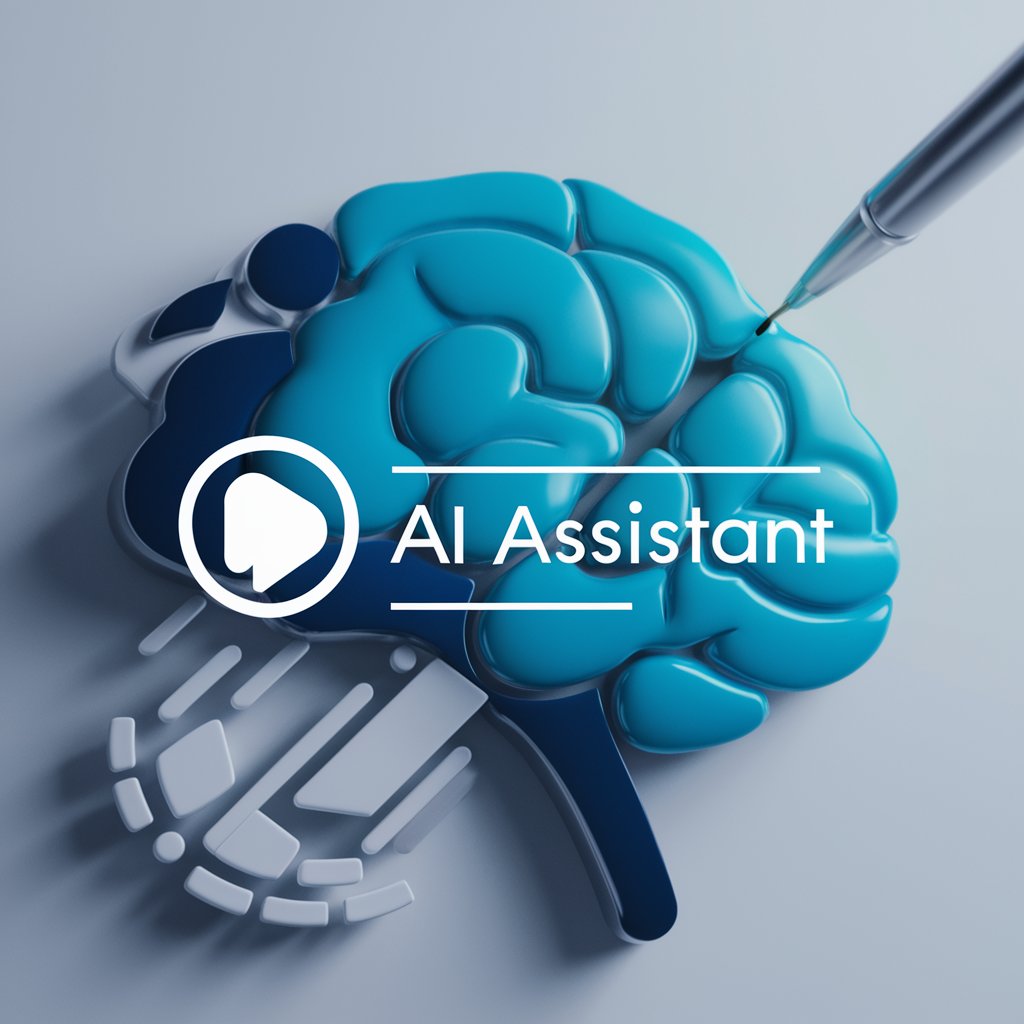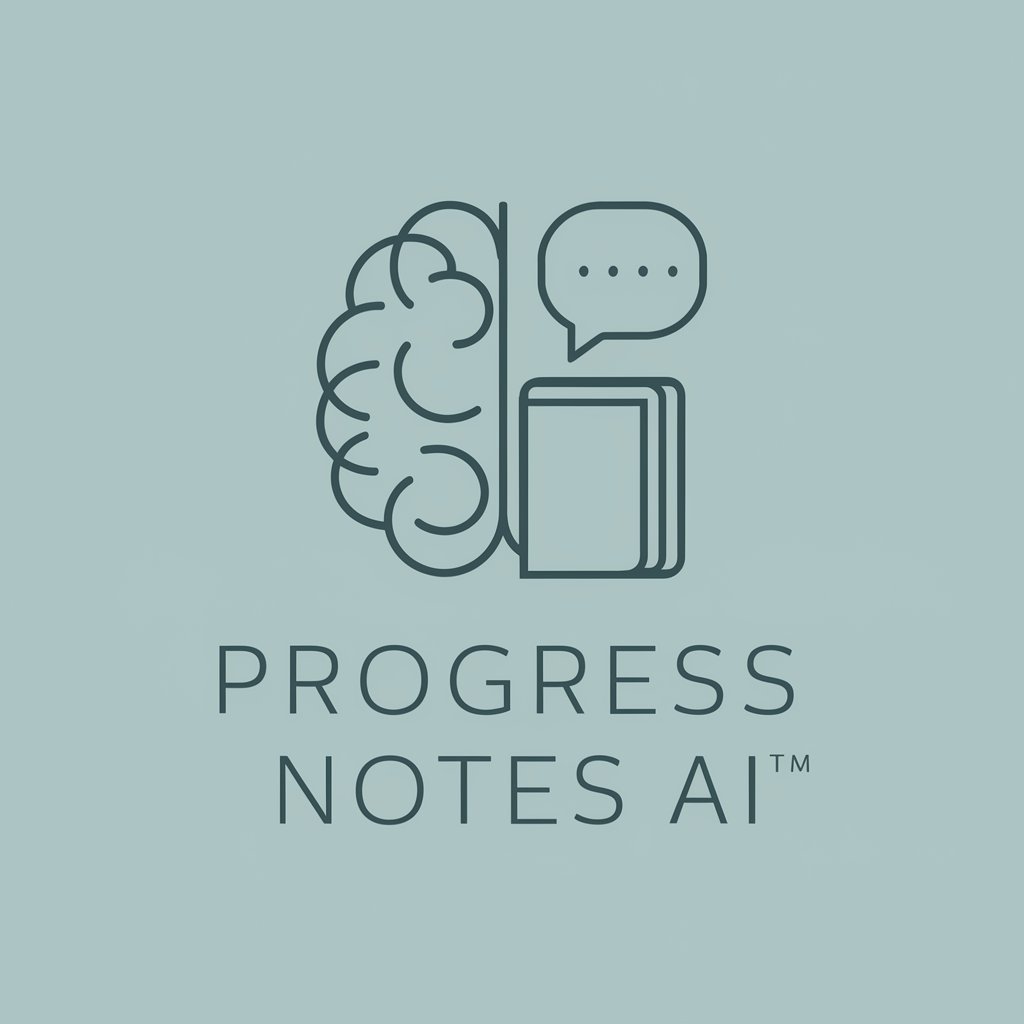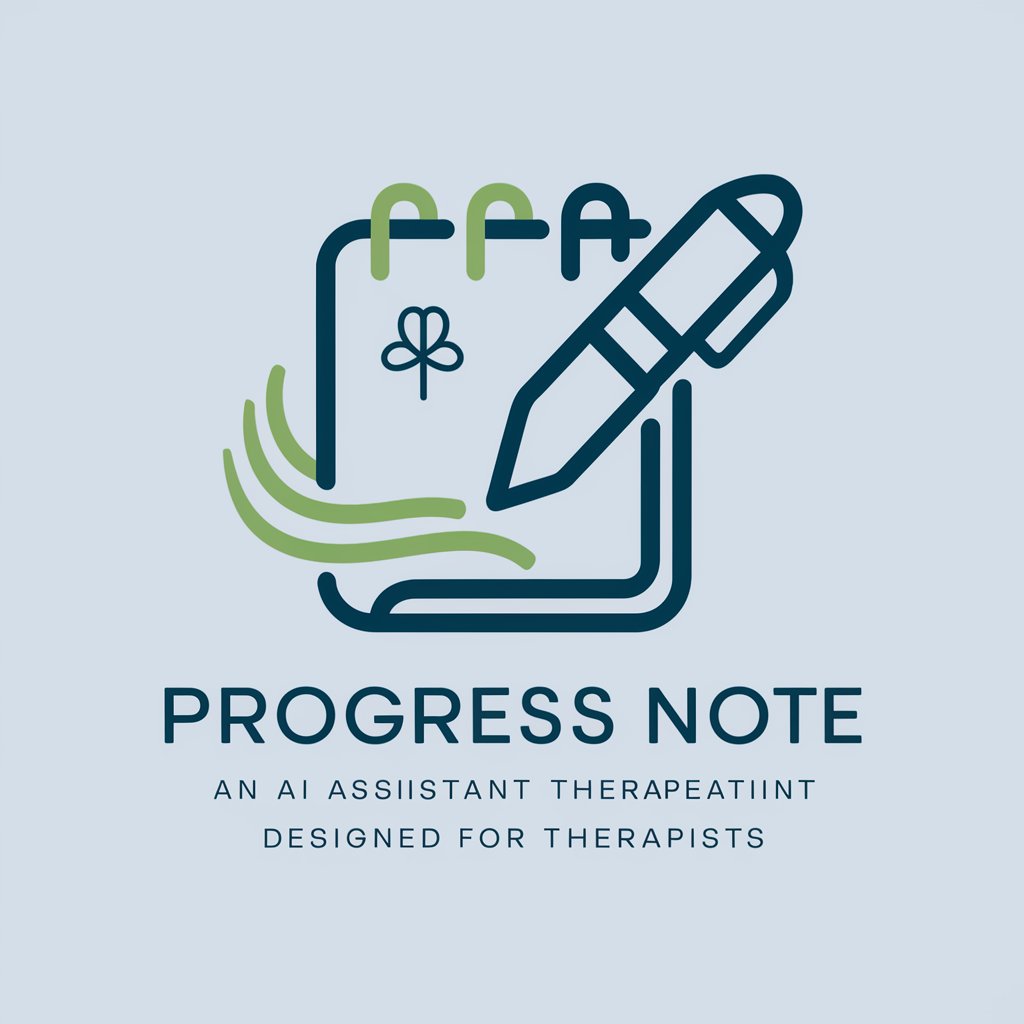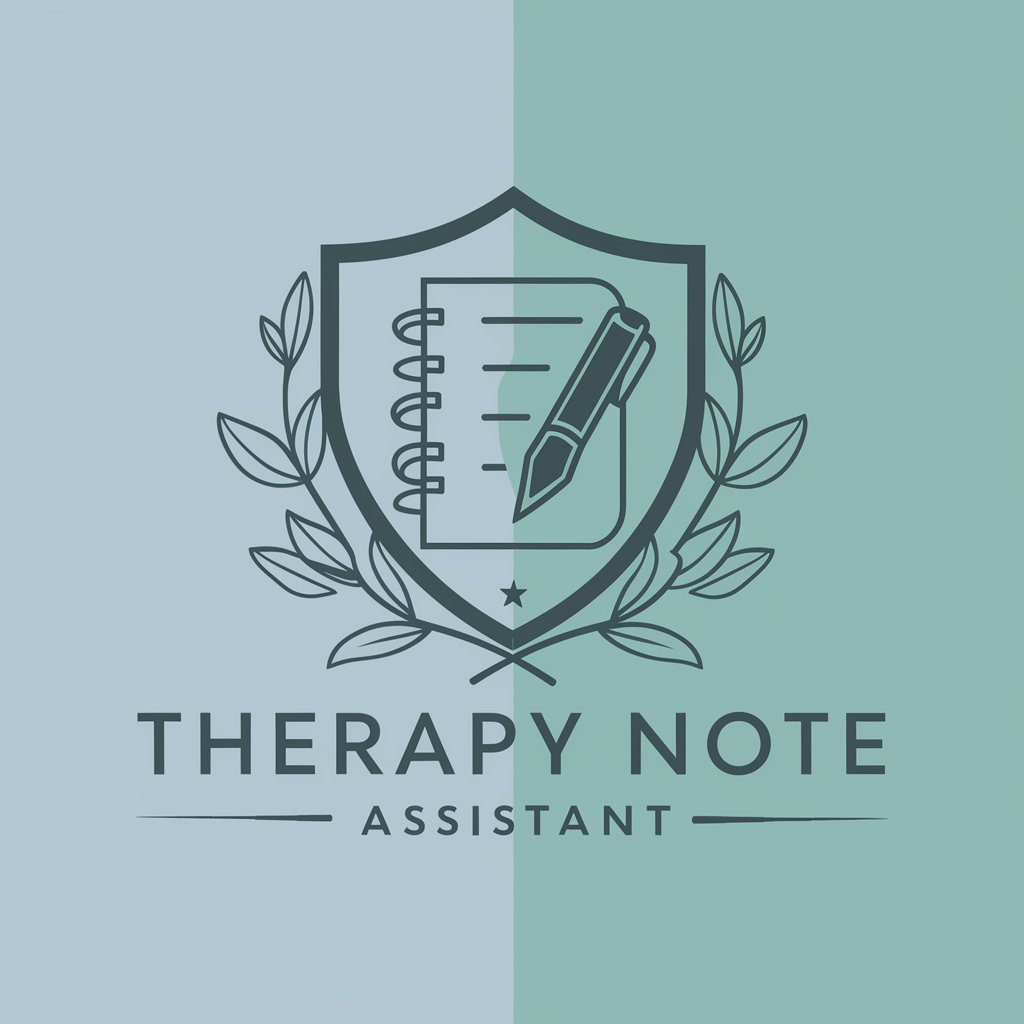
DAP Therapy Notes - AI-powered DAP note generation

AI-powered therapy note documentation
Get Embed Code
Overview of DAP Therapy Notes
DAP Therapy Notes is a structured approach to clinical documentation used by mental health professionals. The acronym DAP stands for Data, Assessment, and Plan. These notes offer a streamlined way to capture key information from therapy sessions, ensuring that therapists can accurately document a client's progress and clinical needs. The design is intended to assist therapists in organizing their thoughts and observations systematically. DAP Notes are based on three primary components: Data (objective and subjective observations), Assessment (clinician’s interpretation of the session), and Plan (next steps for treatment). For example, in a session with a client experiencing anxiety, the 'Data' section might include the client's report of symptoms like excessive worry or physical manifestations like sweating. The 'Assessment' would interpret these reports, considering the severity and frequency of the symptoms, linking them to the client's diagnosis. Lastly, the 'Plan' would outline next steps, such as recommending Cognitive Behavioral Therapy (CBT) exercises or scheduling a follow-up session to track progress. In short, DAP Therapy Notes are designed to guide therapists in creating organized and concise session notes while maintaining ethical and professional standards in documentation. Powered by ChatGPT-4o。

Key Functions of DAP Therapy Notes
Structured Documentation
Example
Therapists can use the DAP format to ensure that key elements from each session are captured in a consistent manner, making it easier to reference past sessions and track client progress over time.
Scenario
A therapist working with a client who has PTSD uses DAP notes to document each session. In the Data section, they record that the client reported nightmares and flashbacks during the past week. In the Assessment, they note the worsening of symptoms due to external stressors. In the Plan, they outline the introduction of grounding techniques in the next session.
Tracking Client Progress
Example
DAP notes make it easier for therapists to track changes over time by reviewing the 'Assessment' and 'Plan' sections from previous sessions.
Scenario
A therapist working with a client suffering from depression might notice, after reviewing several sessions’ notes, that the client has shown significant improvement in mood and daily functioning. This insight can help shape ongoing treatment and provide evidence for the effectiveness of the therapeutic approach.
Facilitating Supervision and Collaboration
Example
The clear, concise format of DAP notes allows for easier sharing of client progress with supervisors, multidisciplinary teams, or in cases where treatment is transferred to another therapist.
Scenario
A therapist undergoing supervision submits DAP notes for review. The supervisor can easily follow the case by looking at the progression in the 'Assessment' and 'Plan' sections, making feedback more targeted and efficient.
Legal and Ethical Compliance
Example
The use of DAP notes helps ensure that clinical documentation meets legal and ethical standards by providing a clear and organized record of the client’s progress and the therapist’s clinical decisions.
Scenario
In the event of a legal dispute or insurance audit, the therapist’s DAP notes clearly outline their decision-making process, supporting their professional integrity and compliance with required standards.
Simplified Note-Taking
Example
DAP notes reduce the cognitive load on therapists by providing a focused framework for note-taking, which can be crucial when managing a large caseload.
Scenario
A therapist with multiple clients finds that DAP notes help them quickly and effectively document sessions without feeling overwhelmed by having to write long, unstructured narratives.
Target Users of DAP Therapy Notes
Individual Therapists in Private Practice
Therapists working in private practice often need to manage all aspects of their work independently, from client care to administrative tasks like note-taking. DAP notes provide a structured format that ensures they capture all essential clinical information while also saving time. The simplified note-taking allows them to focus more on their clients without compromising on the quality of their documentation.
Therapists in Agency Settings
Therapists working in agencies, especially those dealing with a high volume of clients, benefit from DAP notes because of the format’s consistency. In such environments, where multiple therapists may be involved in a client's care, DAP notes facilitate smoother handovers and collaboration by maintaining a clear and organized record of a client’s history and progress.
Clinical Supervisors and Trainees
Clinical supervisors overseeing trainees benefit from DAP notes as they provide a clear framework for reviewing cases and offering constructive feedback. For trainees, DAP notes offer a straightforward approach to documenting sessions, ensuring they capture critical aspects of therapy without becoming overwhelmed by the process.
Multidisciplinary Teams
In environments where care is provided by a multidisciplinary team (e.g., psychologists, social workers, psychiatrists), DAP notes are particularly useful because they create a common language for documenting clinical information. This ensures that all team members can easily understand the client's status and contribute effectively to treatment planning.
Mental Health Agencies Focusing on Compliance
Agencies that emphasize legal, ethical, and insurance compliance benefit from DAP notes because the structured format naturally ensures that documentation is thorough and meets required standards. This reduces the risk of legal liability and helps ensure reimbursement from insurance providers.

How to Use DAP Therapy Notes
1
Visit yeschat.ai for a free trial without login; no need for ChatGPT Plus.
2
Gather your therapy session data including client details, presenting issues, session observations, and therapeutic interventions.
3
Open the DAP Therapy Notes section within the platform and begin entering the session data (D), including verbal and non-verbal communication, mood, and client behaviors.
4
Provide a clear assessment (A), summarizing your clinical evaluation of the client’s emotional state and progress.
5
Enter the plan (P), which includes future interventions, goals, and any additional sessions or homework for the client.
Try other advanced and practical GPTs
Cannabis Guide
Unlocking Cannabis Insights with AI

socialmediator
Empower Your Social Media with AI

RestaurantManager
Streamlining restaurant operations with AI

Drone Pilot
Elevate Your Drone Skills with AI

Drone Advisor
AI-powered Drone Expertise

Drone
Empower Your Words with AI

GetAI.Info
Empowering AI exploration with cutting-edge tools

Humane Tech Advisor
Empowering Ethical Digital Innovation

微头条
Craft Your Story with AI

Decision Maker
AI-powered, outcome-driven decision making

Readable text on Dall-e images
AI-powered text customization on images

Ostomy Advisor
Empowering Ostomy Care with AI

Common Questions about DAP Therapy Notes
What are DAP therapy notes, and why are they useful?
DAP notes structure therapy documentation into three parts: Data (objective observations), Assessment (clinical evaluation), and Plan (future interventions). They provide a clear, concise record that helps track client progress and ensures legal and clinical accountability.
Can DAP Therapy Notes be customized for different therapy modalities?
Yes, DAP notes are flexible and can be tailored to various therapeutic approaches such as cognitive-behavioral therapy (CBT), psychodynamic therapy, or solution-focused therapy, making them a versatile tool for any clinician.
How does DAP Therapy Notes differ from SOAP notes?
While both formats serve to document therapy sessions, DAP notes focus more on the therapist's analysis and future plans (A and P), whereas SOAP notes emphasize the subjective experience of the client and objective data from the session.
Are there legal requirements for DAP Therapy Notes?
While DAP notes aren't legally required, they adhere to best practices for clinical documentation. They help maintain clear, organized records that can be used for legal defense, insurance purposes, or client reviews.
What tips can help optimize the usage of DAP Therapy Notes?
Ensure that your Data (D) is objective and descriptive, the Assessment (A) is grounded in clinical reasoning, and the Plan (P) is actionable and time-bound. Regularly update notes to reflect ongoing client progress.





